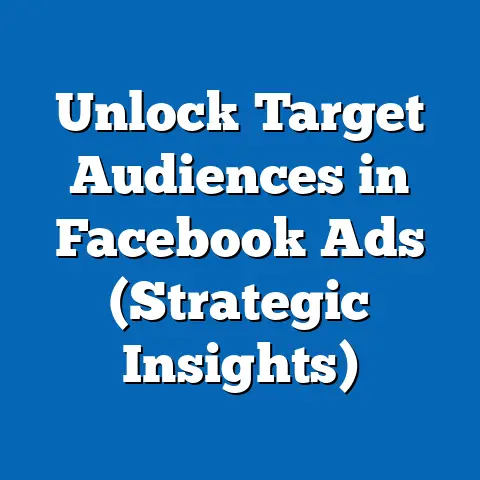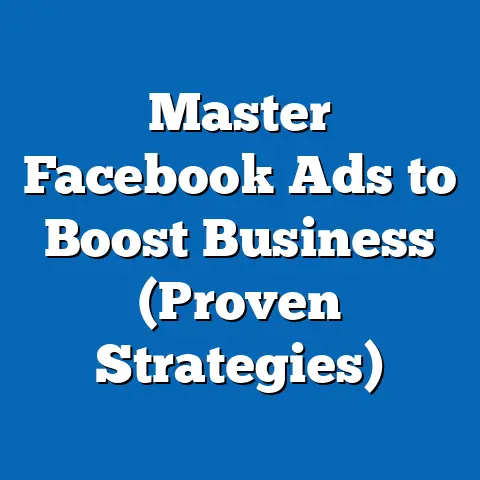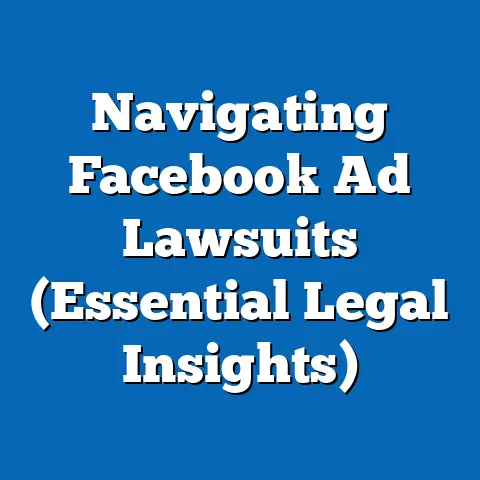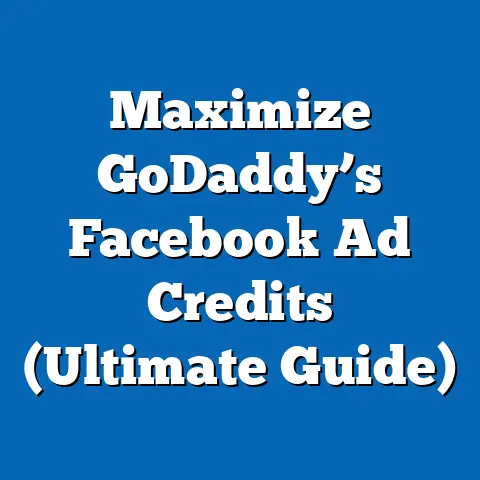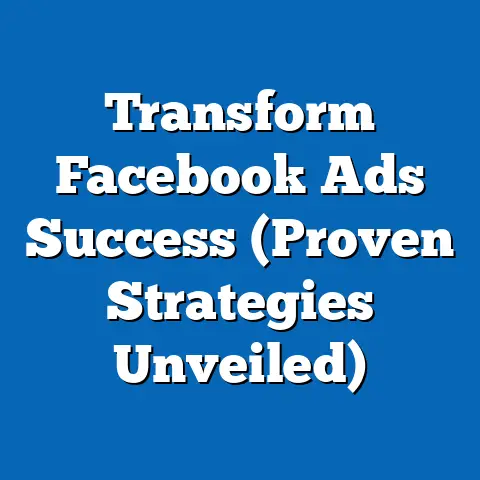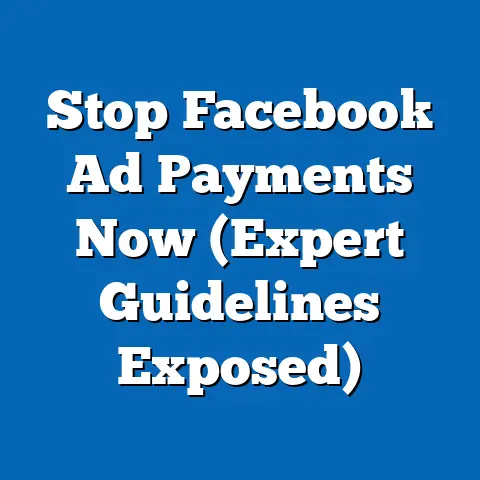Master Facebook Ad Testing (Proven Strategies Unveiled)
I’ve been in the digital marketing game long enough to see trends come and go, but one thing has remained constant: the power of testing. And when it comes to Facebook advertising, testing isn’t just a good idea, it’s essential. Think of Facebook ad testing as a constant conversation with your audience. You’re not just broadcasting a message; you’re listening to their response, and adjusting your message accordingly. Today, I want to introduce you to a concept I call “The Testing Pyramid.”
Imagine a pyramid with three distinct layers. At the base, we have the foundational strategies – the bedrock upon which all other testing rests. These are the A/B tests, audience segmentation, and budget allocations that every advertiser should be familiar with. Moving up, we encounter the intermediate techniques. This is where things get interesting, with multivariate testing, dynamic ads, and a keen eye on seasonal trends. Finally, at the apex of the pyramid, we find the advanced tactics. These are the strategies employed by seasoned pros, involving conversion rate optimization (CRO), leveraging machine learning, and even cross-platform testing.
Just like building a real pyramid, you need a solid foundation before you can reach the top. Skipping steps or neglecting the basics will lead to instability and ultimately, a collapse of your advertising efforts. Mastering each layer of this pyramid is not just about understanding the techniques, but also about cultivating a mindset of continuous improvement. It’s about embracing experimentation, learning from failures, and constantly refining your approach based on data.
In this guide, I’ll walk you through each layer of the Testing Pyramid, providing actionable strategies, real-world examples, and insights I’ve gained over years of managing Facebook ad campaigns. We’ll explore the nuances of A/B testing, delve into the complexities of multivariate analysis, and uncover the power of machine learning. By the end of this journey, you’ll have a comprehensive understanding of how to test effectively on Facebook and achieve exceptional advertising results. So, let’s start building our pyramid!
The Importance of Ad Testing
Why is ad testing so crucial? I’ve seen countless campaigns falter because they were based on assumptions rather than data. In the world of Facebook advertising, assumptions are your enemy. Ad testing is the process of systematically experimenting with different elements of your ads to determine what resonates best with your target audience. It’s about finding the sweet spot where your message, visuals, and targeting align perfectly to drive the desired results.
Think of it this way: you wouldn’t launch a new product without conducting market research, would you? Ad testing is the equivalent of market research for your advertising campaigns. It allows you to gather valuable insights about your audience’s preferences, behaviors, and pain points. This information can then be used to refine your messaging, improve your targeting, and ultimately, increase your ROI.
Let’s look at some statistics. A study by HubSpot found that companies that A/B test their landing pages generate 55% more leads. While this statistic refers to landing pages, the principle applies equally to Facebook ads. By testing different ad variations, you can significantly improve your click-through rates (CTR), conversion rates, and overall campaign performance.
I remember working with a client who was convinced that their target audience preferred a specific type of imagery in their ads. They had invested heavily in creating these images, but the campaign was underperforming. I suggested we run an A/B test comparing their preferred images with a completely different set of visuals. To their surprise, the alternative images outperformed their original choice by a significant margin. This experience taught them a valuable lesson about the importance of data-driven decision-making.
Ad testing helps you:
- Improve ROI: By identifying high-performing ad variations, you can allocate your budget more effectively and maximize your return on investment.
- Target the right audience: Testing different audience segments allows you to identify the demographics, interests, and behaviors that are most receptive to your message.
- Refine your messaging: Ad testing helps you fine-tune your ad copy, headlines, and calls to action to resonate with your target audience.
- Reduce wasted ad spend: By quickly identifying and eliminating underperforming ad variations, you can minimize wasted ad spend and focus on what works.
- Gain valuable insights: Ad testing provides valuable insights into your audience’s preferences, behaviors, and pain points, which can inform your overall marketing strategy.
The ad testing process can be broken down into a simple four-step cycle:
- Hypothesis: Formulate a hypothesis about what you believe will improve ad performance. For example, “I believe that using a video in my ad will increase click-through rates.”
- Execution: Create different ad variations based on your hypothesis and run them simultaneously.
- Analysis: Track and analyze the performance of each ad variation, paying close attention to key metrics like CTR, CPC, and conversion rates.
- Iteration: Based on your analysis, make adjustments to your ads and repeat the testing cycle.
This iterative process of hypothesis, execution, analysis, and iteration is the key to unlocking the full potential of Facebook advertising. It’s a continuous cycle of learning, adapting, and improving that will ultimately lead to better results.
Key Takeaway: Ad testing is not optional; it’s a fundamental aspect of successful Facebook advertising. By embracing a data-driven approach and continuously testing different ad variations, you can improve your ROI, target the right audience, and refine your messaging for maximum impact.
Foundational Strategies
Now that we understand the importance of ad testing, let’s dive into the foundational strategies that form the base of our Testing Pyramid. These are the essential techniques that every Facebook advertiser should master before moving on to more advanced tactics.
A/B Testing: The Cornerstone of Optimization
A/B testing, also known as split testing, is the process of comparing two versions of an ad to see which one performs better. It’s a simple yet powerful technique that allows you to isolate specific elements of your ad and determine their impact on performance. I use A/B testing almost daily.
To conduct an effective A/B test, you need to change only one element at a time. This allows you to accurately attribute any changes in performance to that specific element. For example, you could test two different headlines, two different images, or two different calls to action.
Here are some key elements you can A/B test in your Facebook ads:
- Headlines: Test different headlines to see which ones are most attention-grabbing and compelling.
- Images: Experiment with different images to see which ones resonate best with your target audience.
- Ad Copy: Test different ad copy variations to see which ones are most persuasive and informative.
- Calls to Action (CTAs): Test different CTAs to see which ones are most effective at driving clicks and conversions.
- Landing Pages: Test different landing pages to see which ones are most effective at converting visitors into leads or customers.
Let’s say you’re running an ad for a new e-commerce product. You could A/B test two different headlines: “Shop Now and Get 20% Off” versus “Discover the Must-Have Gadget of the Year.” By running these two headlines simultaneously, you can see which one generates more clicks and conversions.
When analyzing your A/B test results, pay close attention to the following metrics:
- Click-Through Rate (CTR): The percentage of people who see your ad and click on it.
- Cost Per Click (CPC): The amount you pay each time someone clicks on your ad.
- Conversion Rate: The percentage of people who click on your ad and complete a desired action, such as making a purchase or filling out a form.
- Return on Ad Spend (ROAS): The amount of revenue you generate for every dollar you spend on advertising.
Example: I once worked with a travel company that was running Facebook ads to promote their vacation packages. They were using a generic headline that simply stated the destination and price. I suggested they A/B test a more compelling headline that highlighted the unique benefits of the vacation package. We tested “Escape to Paradise: All-Inclusive Vacation Packages Starting at $999” against their original headline. The new headline generated a 30% increase in click-through rates and a 15% increase in conversion rates.
Audience Segmentation: Reaching the Right People
Audience segmentation is the process of dividing your target audience into smaller groups based on shared characteristics, such as demographics, interests, behaviors, and purchase history. By segmenting your audience, you can create more targeted ads that resonate with specific groups of people.
Facebook offers a variety of targeting options that allow you to segment your audience in different ways:
- Demographics: Target people based on age, gender, education, income, and other demographic factors.
- Interests: Target people based on their interests, hobbies, and activities.
- Behaviors: Target people based on their online behavior, such as purchase history, website visits, and app usage.
- Custom Audiences: Create custom audiences based on your existing customer data, such as email lists and website visitors.
- Lookalike Audiences: Create lookalike audiences based on your custom audiences to reach new people who are similar to your existing customers.
Testing different audience segments is crucial for identifying the demographics, interests, and behaviors that are most receptive to your message. You can create different ad sets, each targeting a different audience segment, and then compare their performance to see which ones generate the best results.
Example: A clothing retailer could segment their audience based on age, targeting different ad creatives to teenagers, young adults, and older adults. They could also segment their audience based on interests, targeting people who are interested in fashion, sports, or outdoor activities.
Budget Allocation: Optimizing Your Spend
Your budget is a critical factor in determining the success of your Facebook ad campaigns. Testing different budget levels can help you find the optimal balance between reach and cost.
There are two main types of budget options on Facebook:
- Daily Budget: The average amount you’re willing to spend each day on your ad campaign.
- Lifetime Budget: The total amount you’re willing to spend over the entire duration of your ad campaign.
When testing different budget levels, it’s important to consider the size of your target audience and the cost per click (CPC) in your industry. If your target audience is small, you may not need a large budget to reach them effectively. Conversely, if your target audience is large and the CPC is high, you may need a larger budget to generate meaningful results.
I suggest starting with a smaller budget and gradually increasing it as you see positive results. This allows you to test the waters without risking a large amount of money. You can also use Facebook’s automated bidding options, such as “Lowest Cost” or “Target Cost,” to optimize your budget allocation.
Example: A new business launching a Facebook ad campaign might start with a daily budget of $10-$20 per ad set. As they gather data and optimize their campaigns, they can gradually increase their budget to $50-$100 per day, or even higher, depending on their goals and results.
Key Takeaway: Mastering these foundational strategies is essential for building a solid foundation for your Facebook ad testing efforts. By consistently A/B testing different ad elements, segmenting your audience effectively, and optimizing your budget allocation, you can significantly improve your campaign performance and achieve your advertising goals.
Intermediate Techniques
With a solid foundation in place, we can now move on to the intermediate techniques that will further enhance your Facebook ad testing capabilities. These strategies require a deeper understanding of the platform and a more creative approach to experimentation.
Multi-Variate Testing: Unleashing the Power of Combinations
While A/B testing focuses on changing one element at a time, multi-variate testing (MVT) allows you to test multiple variables simultaneously. This approach can be particularly useful when you want to understand how different combinations of ad elements interact with each other.
For example, you could test two different headlines, two different images, and two different calls to action all at the same time. This would result in eight different ad variations (2 x 2 x 2). By analyzing the performance of these variations, you can identify the combination that generates the best results.
MVT requires a larger sample size than A/B testing, as you need to collect enough data to accurately assess the performance of each variation. It’s also more complex to analyze, as you need to consider the interactions between different variables.
Example: I worked with an e-commerce company that wanted to optimize their product ads. We used MVT to test two different headlines, two different product descriptions, and two different calls to action. After running the test for several weeks, we discovered that the combination of headline A, description B, and CTA A generated the highest conversion rate. This insight allowed us to create a highly optimized ad that significantly improved sales.
Dynamic Ads: Personalization at Scale
Dynamic ads are a powerful tool for personalizing your ads based on individual user behavior and preferences. They allow you to automatically display relevant products or services to people who have previously interacted with your website or app.
For example, if someone visits your website and views a specific product, you can use dynamic ads to show them that product in their Facebook feed. You can also use dynamic ads to show them similar products or complementary items.
Testing different dynamic elements, such as product images, descriptions, and prices, can help you optimize the performance of your dynamic ads. You can also test different targeting options to see which ones are most effective at reaching people who are likely to be interested in your products or services.
Example: An online clothing retailer could use dynamic ads to show people the products they viewed on their website, as well as similar products in the same category. They could also use dynamic ads to promote special offers and discounts on products that people have previously shown interest in.
Seasonal and Trend-Based Testing: Riding the Wave
Seasonal trends and events can have a significant impact on consumer behavior. Testing ads based on these trends can help you capitalize on increased demand and drive more sales.
For example, you could run ads promoting holiday gifts during the Christmas season or ads promoting back-to-school supplies during the summer months. You can also test ads that are relevant to current events, such as sporting events, political campaigns, or cultural celebrations.
When testing seasonal and trend-based ads, it’s important to start early and give yourself enough time to gather data and optimize your campaigns. You should also monitor the performance of your ads closely and make adjustments as needed based on changing trends and consumer behavior.
Example: A restaurant could run ads promoting their Valentine’s Day dinner specials in the weeks leading up to Valentine’s Day. They could also run ads promoting their outdoor seating area during the summer months or ads promoting their catering services during the holiday season.
Key Takeaway: These intermediate techniques will help you take your Facebook ad testing to the next level. By mastering multi-variate testing, dynamic ads, and seasonal and trend-based testing, you can create more personalized and relevant ads that resonate with your target audience and drive better results.
Advanced Tactics
For seasoned advertisers looking to push the boundaries of Facebook ad testing, these advanced tactics offer a pathway to even greater optimization and performance. These strategies require a deep understanding of the platform, a willingness to experiment, and a keen eye for data analysis.
Conversion Rate Optimization (CRO): The Art of Turning Clicks into Customers
Conversion Rate Optimization (CRO) is the process of improving the percentage of website visitors who complete a desired action, such as making a purchase, filling out a form, or signing up for a newsletter. While CRO is typically associated with website optimization, it also plays a crucial role in Facebook ad testing.
Testing different landing pages is an essential part of CRO. You can create different landing page variations and A/B test them to see which ones are most effective at converting visitors into leads or customers. You can also test different elements on your landing pages, such as headlines, images, calls to action, and form fields.
When testing landing pages, it’s important to track key metrics like bounce rate, time on page, and conversion rate. You should also use heatmaps and user session recordings to understand how people are interacting with your landing pages.
Example: I once worked with a lead generation company that was struggling to convert Facebook ad clicks into qualified leads. We analyzed their landing page and identified several areas for improvement. We A/B tested different headlines, form layouts, and calls to action. After several rounds of testing, we were able to increase their conversion rate by over 50%.
Machine Learning and Automated Insights: Letting the Algorithms Do the Work
Facebook’s machine learning algorithms are constantly learning and adapting to optimize ad performance. By leveraging these tools, you can automate many aspects of your ad testing and gain valuable insights into what works best.
For example, you can use Facebook’s “Campaign Budget Optimization” (CBO) feature to automatically allocate your budget across different ad sets based on performance. You can also use Facebook’s “Dynamic Creative” feature to automatically test different combinations of ad elements and identify the best performing variations.
Facebook also provides a variety of automated insights that can help you understand your audience, your competitors, and your overall ad performance. These insights can be used to inform your ad testing strategy and identify new opportunities for optimization.
Example: A large e-commerce company could use CBO to automatically allocate their budget across different product categories based on sales performance. They could also use Dynamic Creative to test different product images, descriptions, and prices to see which ones generate the highest conversion rates.
Cross-Platform Testing: Expanding Your Horizons
While Facebook is a powerful advertising platform, it’s important to remember that it’s just one piece of the puzzle. Testing ads across different platforms, such as Google Ads, Twitter, and LinkedIn, can help you understand how your ads perform in relation to other channels and identify new opportunities for growth.
You can use cross-platform testing to compare the performance of your ads on different platforms, identify the channels that generate the best ROI, and optimize your overall marketing budget allocation. You can also use cross-platform testing to learn more about your audience and their preferences on different platforms.
Example: A software company could run ads on Facebook, Google Ads, and LinkedIn to promote their new product. By tracking the performance of their ads on each platform, they could identify which channel generates the most qualified leads and allocate their budget accordingly.
Key Takeaway: These advanced tactics will help you unlock the full potential of Facebook ad testing. By mastering CRO, leveraging machine learning, and expanding your testing efforts across different platforms, you can achieve even greater optimization and performance.
Analyzing Results
Ad testing is only half the battle. The real magic happens when you meticulously analyze the results and translate them into actionable insights. I’ve seen campaigns that were generating mediocre results suddenly skyrocket after a thorough analysis of the data.
Key Metrics to Track
Here are some key metrics you should be tracking when analyzing your ad testing results:
- Impressions: The number of times your ad was displayed.
- Reach: The number of unique people who saw your ad.
- Click-Through Rate (CTR): The percentage of people who saw your ad and clicked on it. A higher CTR generally indicates that your ad is relevant and engaging.
- Cost Per Click (CPC): The amount you pay each time someone clicks on your ad. A lower CPC means you’re getting more clicks for your budget.
- Conversion Rate: The percentage of people who clicked on your ad and completed a desired action, such as making a purchase or filling out a form. A higher conversion rate indicates that your landing page is effective at converting visitors into customers.
- Cost Per Acquisition (CPA): The amount you pay to acquire a new customer. A lower CPA means you’re acquiring customers more efficiently.
- Return on Ad Spend (ROAS): The amount of revenue you generate for every dollar you spend on advertising. A higher ROAS means your ads are generating a strong return on investment.
Interpreting the Data
Once you’ve gathered your data, it’s time to interpret the results and draw actionable insights. Look for patterns and trends in the data. Which ad variations performed the best? Which audience segments were most receptive to your message? Which landing pages generated the highest conversion rates?
Don’t just focus on the overall results. Dig deeper and look for granular insights. For example, you might discover that one headline performed well with a specific demographic, but not with another. This information can be used to create more targeted ads that resonate with specific groups of people.
Common Pitfalls to Avoid
When analyzing ad performance, it’s important to be aware of some common pitfalls:
- Drawing conclusions too early: Don’t make decisions based on limited data. Give your tests enough time to run and gather sufficient data before drawing any conclusions.
- Ignoring statistical significance: Make sure your results are statistically significant before drawing any conclusions. A small difference in performance may not be meaningful if it’s not statistically significant.
- Focusing on vanity metrics: Don’t get too caught up in vanity metrics like impressions and reach. Focus on the metrics that directly impact your business goals, such as conversion rate and ROAS.
- Failing to document your learnings: Keep a record of your ad testing results and learnings. This will help you avoid repeating mistakes and build on your successes.
Key Takeaway: Analyzing your ad testing results is just as important as running the tests themselves. By tracking key metrics, interpreting the data carefully, and avoiding common pitfalls, you can gain valuable insights that will help you optimize your Facebook ad campaigns and achieve your business goals.
Building a Testing Culture
Ad testing is not a one-time activity; it’s an ongoing process that should be integrated into your organization’s culture. Creating a testing culture encourages experimentation, learning from failures, and continuous improvement.
Fostering Experimentation
Encourage your team to experiment with new ideas and approaches. Provide them with the resources and support they need to run tests and gather data. Make it clear that it’s okay to fail, as long as they learn from their mistakes.
Learning from Failures
Failures are an inevitable part of the ad testing process. Don’t be discouraged by them. Instead, embrace them as learning opportunities. Analyze why the test failed and use that knowledge to inform your future testing efforts.
Documenting and Sharing Learnings
Document your ad testing results and learnings in a central repository. This will help you avoid repeating mistakes and build on your successes. Share your learnings with other teams and departments within your organization. This will help to spread the testing culture and improve overall marketing effectiveness.
I remember working with a company that was hesitant to embrace ad testing because they were afraid of failure. They had a very conservative approach to marketing and were reluctant to try anything new. I convinced them to start small, with a few simple A/B tests. As they saw the positive impact of testing on their campaign performance, they became more comfortable with experimentation. Over time, they developed a true testing culture and saw significant improvements in their overall marketing results.
Key Takeaway: Building a testing culture is essential for long-term success with Facebook advertising. By fostering experimentation, learning from failures, and documenting and sharing learnings, you can create an environment that encourages continuous improvement and drives better results.
Conclusion
We’ve journeyed through the Testing Pyramid, exploring the foundational strategies, intermediate techniques, and advanced tactics that are essential for mastering Facebook ad testing. We’ve also discussed the importance of analyzing results and building a testing culture within your organization.
The key takeaways from each section are:
- The Importance of Ad Testing: Ad testing is not optional; it’s a fundamental aspect of successful Facebook advertising.
- Foundational Strategies: Mastering A/B testing, audience segmentation, and budget allocation is essential for building a solid foundation.
- Intermediate Techniques: Multi-variate testing, dynamic ads, and seasonal and trend-based testing will help you take your testing to the next level.
- Advanced Tactics: CRO, machine learning, and cross-platform testing will help you unlock the full potential of Facebook ad testing.
- Analyzing Results: Analyzing your ad testing results is just as important as running the tests themselves.
- Building a Testing Culture: Building a testing culture is essential for long-term success with Facebook advertising.
Mastering Facebook ad testing is an ongoing journey that requires dedication, creativity, and a willingness to adapt based on data insights. Embrace experimentation, learn from failures, and continuously refine your advertising efforts for long-term success.
I encourage you to implement the strategies discussed in this guide and continuously refine your advertising efforts. Remember, the world of Facebook advertising is constantly evolving, so it’s important to stay up-to-date with the latest trends and best practices. By embracing a mindset of continuous learning and improvement, you can achieve exceptional advertising results and drive sustainable growth for your business. Now go forth and build your own Testing Pyramid!

